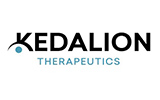
Wear Resistant Steel Plate is a high-carbon alloy steel plate. This means that AR is harder due to the addition of carbon, and formable and weather resistant due to added alloys.
Carbon added during the formation of the steel plate substantially increases toughness and hardness, but reduces strength. Therefore, AR plate is used in situations where abrasions and wear and tear are the main causes of failure. AR plate is not ideal for structural construction uses like support beams in bridges or buildings.
The Wear Resistant Steel Plate market revenue was xx Million USD in 2016, grew to xx Million USD in 2020, and will reach xx Million USD in 2026, with a CAGR of xx during 2020-2026.
Global Wear Resistant Steel Plate Market Development Strategy Pre and Post COVID-19, by Corporate Strategy Analysis, Landscape, Type, Application, and Leading 20 Countries covers and analyzes the potential of the global Wear Resistant Steel Plate industry, providing statistical information about market dynamics, growth factors, major challenges, PEST analysis and market entry strategy Analysis, opportunities and forecasts. The biggest highlight of the report is to provide companies in the industry with a strategic analysis of the impact of COVID-19. At the same time, this report analyzed the market of leading 20 countries and introduce the market potential of these countries.
Major Players in Wear Resistant Steel Plate market are:
ThyssenKrupp
ArcelorMittal
Dillinger
SSAB
ANSTEEL
NSSMC
TISCO
BISALLOY JIGANG
BAOSTEEL
NLMK Clabecq
Xinyu Iron & Steel
WUYANG Steel
JFE
Bisalloy
Baohua Resistant Steel
Most important types of Wear Resistant Steel Plate products covered in this report are:
A514
AR400
AR500
Other
Most widely used downstream fields of Wear Resistant Steel Plate market covered in this report are:
Mining Industry
Construction Industry
Top countries data covered in this report:
United States
Canada
Germany
UK
France
Italy
Spain
Russia
China
Japan
South Korea
Australia
Thailand
Brazil
Argentina
Chile
South Africa
Egypt
UAE
Saudi Arabia
Chapter 1 is the basis of the entire report. In this chapter, we define the market concept and market scope of Wear Resistant Steel Plate, including product classification, application areas, and the entire report covered area.
Chapter 2 is the core idea of the whole report. In this chapter, we provide a detailed introduction to our research methods and data sources.
Chapter 3 focuses on analyzing the current competitive situation in the Wear Resistant Steel Plate market and provides basic information, market data, product introductions, etc. of leading companies in the industry. At the same time, Chapter 3 includes the highlighted analysis--Strategies for Company to Deal with the Impact of COVID-19.
Chapter 4 provides breakdown data of different types of products, as well as market forecasts.
Different application fields have different usage and development prospects of products. Therefore, Chapter 5 provides subdivision data of different application fields and market forecasts.
Chapter 6 includes detailed data of major regions of the world, including detailed data of major regions of the world. North America, Asia Pacific, Europe, South America, Middle East and Africa.
Chapters 7-26 focus on the regional market. We have selected the most representative 20 countries from 197 countries in the world and conducted a detailed analysis and overview of the market development of these countries.
Chapter 27 focuses on market qualitative analysis, providing market driving factor analysis, market development constraints, PEST analysis, industry trends under COVID-19, market entry strategy analysis, etc.
Key Points:
Define, describe and forecast Wear Resistant Steel Plate product market by type, application, end user and region.
Provide enterprise external environment analysis and PEST analysis.
Provide strategies for company to deal with the impact of COVID-19.
Provide market dynamic analysis, including market driving factors, market development constraints.
Provide market entry strategy analysis for new players or players who are ready to enter the market, including market segment definition, client analysis, distribution model, product messaging and positioning, and price strategy analysis.
Keep up with international market trends and provide analysis of the impact of the COVID-19 epidemic on major regions of the world.
Analyze the market opportunities of stakeholders and provide market leaders with details of the competitive landscape.
Years considered for this report:
Historical Years: 2016-2020
Base Year: 2020
Estimated Year: 2021
Forecast Period: 2021-2026
























